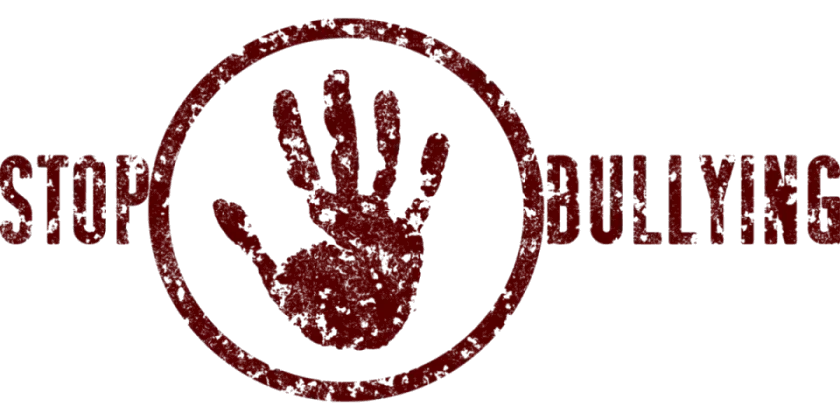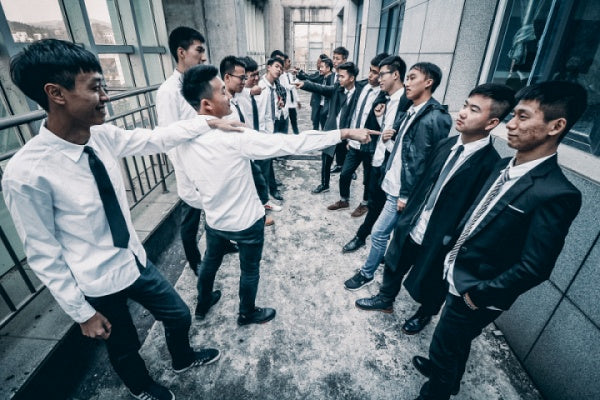Table of Contents
- Introduction
- Definition of Bullying
- Types of Bullying
- Causes of Bullying
- Impact of Bullying
- Identifying the Signs of Bullying
- Dealing with Bullying
- Preventing Bullying
- The Role of Parents and Guardians
- Conclusion
1. Introduction
Bullying is a pervasive issue that can have serious and long-lasting consequences for both the targets and the perpetrators. It is crucial to understand the various forms of bullying, the factors that contribute to its occurrence, and the impact it has on individuals and communities. By gaining a comprehensive understanding of these aspects, we can develop effective strategies to prevent and address bullying.
2. Definition of Bullying
Bullying can be defined as the repeated aggressive behavior that involves an imbalance of power between the perpetrator and the target. It is a deliberate act intended to cause harm, either physically or emotionally. Bullying can occur in various settings, including schools, workplaces, and online platforms.
3. Types of Bullying
Verbal Bullying
Verbal bullying is the act of belittling, humiliating, or intimidating others with words, including name-calling, insults, teasing, and spreading rumors or gossip. Verbal bullying can cause significant emotional distress and damage self-esteem.
Physical Bullying
Physical bullying entails the use of physical force or aggression to harm or intimidate others. This can include hitting, kicking, pushing, and stealing or damaging personal belongings. Physical bullying can result in physical injuries and trauma.
Relational Bullying
Relational bullying, also known as social bullying, focuses on damaging an individual's relationships and social standing. This can involve excluding someone from social groups, spreading rumors, or manipulating others to turn against the target. Relational bullying can lead to social isolation and emotional distress.
Cyberbullying
Cyberbullying is a form of bullying that takes place online or through digital platforms. It involves using technology, such as social media, text messages, or emails, to harass, threaten, or humiliate others. Cyberbullying can be particularly harmful as it reaches a wide audience and can have long-lasting effects.
4. Causes of Bullying
Bullying can arise from a combination of individual, environmental, religious, and social factors. Understanding these causes can help us develop targeted interventions to prevent and address bullying effectively.
Individual Factors
Individual factors that contribute to bullying include:
- Low self-esteem and a desire for power or control
- Lack of empathy and understanding of others' feelings
- Impulsivity and aggression
- Difficulties in managing emotions and anger
Environmental Factors
Environmental factors that can contribute to bullying include:
- Lack of supervision and authority figures
- Tolerance or acceptance of aggressive behavior
- Inadequate policies and procedures to address bullying
- Peer influence and social dynamics
Social Factors
Social factors that contribute to bullying include:
- Cultural norms that condone or overlook aggressive behavior
- Hierarchical structures that reinforce power imbalances
- Racial, gender, sexuality, and other social inequalities and discrimination
- Media influences that promote aggression and violence
5. Impact of Bullying
Bullying can have far-reaching consequences for both the targets and the perpetrators. It is essential to recognize and address the impact of bullying to support those affected and create a safer environment.
Emotional and Psychological Effects
Targets of bullying often experience a range of emotional and psychological effects, including:
- Anxiety and depression
- Feeling of low self-worth and self-esteem
- Feelings of isolation and loneliness
- Increased risk of suicide or self-harm
Perpetrators of bullying may also experience negative emotional and psychological effects, such as guilt, shame, and difficulties in forming healthy relationships.
Academic Consequences
Bullying can significantly impact a student's academic performance and engagement. Targets of bullying may experience difficulties concentrating, declining grades, and increased absenteeism. The stress and anxiety caused by bullying can hinder a student's ability to learn and succeed academically.
Long-Term Effects
The effects of bullying can extend into adulthood and have long-term consequences. Both targets and perpetrators of bullying may experience ongoing mental health issues, difficulties forming and maintaining relationships, and challenges in the workplace. Addressing bullying early is crucial to mitigating its long-term effects.
6. Identifying the Signs of Bullying
It is essential to be able to recognize the signs of bullying to provide appropriate support and intervention. People experiencing bullying often exhibit many of the same symptoms of signs:
- Unexplained injuries or damaged belongings
- Changes in behavior, such as becoming withdrawn or anxious
- Declining academic performance or disinterest in school
- Social isolation or a loss of friends
- Sudden changes in mood or emotional well-being
If you suspect someone is being bullied, it is important to approach them with empathy and offer support.
7. Dealing with Bullying
Addressing bullying requires a multi-faceted approach that involves support systems, empowerment of targets, and intervention strategies.
Support Systems and Resources
Creating a supportive environment is essential in dealing with bullying. This can involve:
- Educating students, teachers, and parents about bullying and its impact
- Encouraging open communication and reporting of bullying incidents
- Providing access to counseling services and mental health support
- Collaborating with community organizations and resources
Empowering Targets of Bullying
Empowering targets of bullying is crucial in helping them regain their confidence and resilience. This can involve:
- Teaching assertiveness skills and self-defense techniques
- Encouraging targets to seek support from trusted adults or friends
- Promoting a sense of belonging and inclusivity
- Fostering empathy and understanding among students
Intervention Strategies
Intervening in instances of bullying is essential to prevent further harm and address the underlying issues. Some effective intervention strategies include:
- Mediation and conflict resolution techniques
- Restorative justice practices to promote understanding and accountability
- Implementing consequences for bullying behavior
- Providing social and emotional learning programs
8. Preventing Bullying
Prevention is key in creating a safe and inclusive environment that discourages bullying. Some strategies for preventing bullying include:
Ways to Make A Positive School Environment
- Establishing clear expectations for behavior and fostering a positive school climate
- Encouraging respectful and inclusive interactions among students
- Implementing peer support programs and mentoring initiatives
- Promoting a zero-tolerance policy for bullying
Teaching Empathy and Respect
- Incorporating empathy and respect into the curriculum
- Encouraging perspective-taking and understanding different viewpoints
- Teaching conflict resolution skills and peaceful problem-solving strategies
Implementing Anti-Bullying Policies
- Developing and enforcing comprehensive anti-bullying policies
- Providing training for teachers and staff on recognizing and addressing bullying
- Regularly assessing and evaluating the effectiveness of prevention efforts
- Engaging parents and caregivers in anti-bullying initiatives
9. The Role of Parents and Guardians
Parents and guardians play a vital role in preventing and addressing bullying. Some ways they can contribute include:
- Openly discussing bullying with their children and emphasizing the importance of kindness and respect
- Monitoring their children's online activities and social interactions
- Providing emotional support and fostering resilience in their children
- Collaborating with schools and educators to address bullying incidents
10. Conclusion
Bullying is a complex issue that requires a comprehensive approach to prevent and address effectively. By understanding the causes, impact, and potential solutions, we can work towards creating a society that is free from bullying. It is essential to prioritize the well-being and safety of individuals, foster empathy and respect, and empower targets of bullying. Together, we can create a world where everyone can thrive, free from the fear of bullying.
Note: The information provided in this article is for educational purposes only and should not be considered professional advice. If you or someone you know is experiencing bullying, please seek assistance from a qualified professional or contact a helpline in your country.
This article is an informative piece generated in collaboration with Bing AI Chat to provide relevant content that can be updated periodically.
 Question? Comment? Rebuttal?
Question? Comment? Rebuttal?Copy the article's title or link to send with your response.





